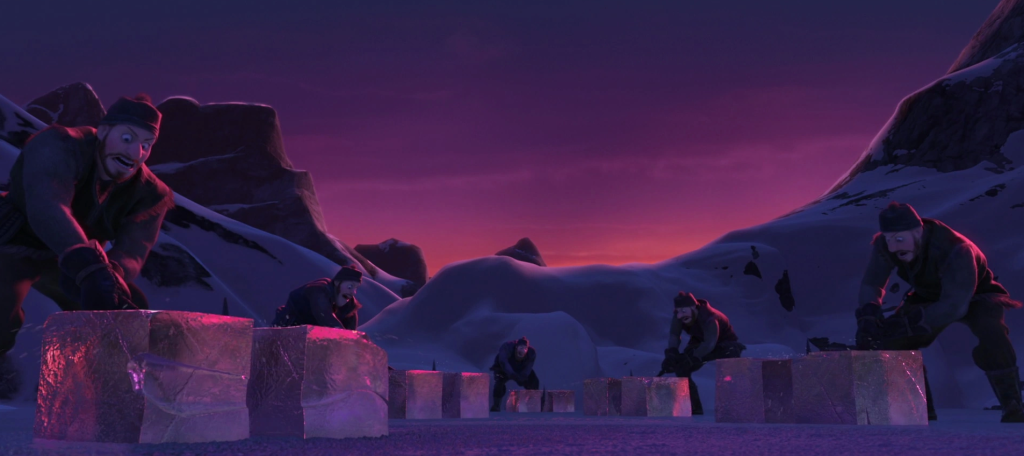The Ice King Cometh
The 2013 movie Frozen (which you probably should watch if you haven’t) opens with an squadron of men, armed with sharp objects, traversing the ice and snow in frigid, remote area. While plunder is on their minds, in a sense, they aren’t going to war. They’re going to a lake. Their goal, as seen above: to harvest as much ice as possible and carry it back with them to their kingdom.
In modern times, this seems kind of strange. We have things called freezers which, when furnished with a tray filled with water, can provide us with enough cubes of ice to make any drink invitingly cold. Some refrigerators even come with ice makers which can provide ice almost on command. But that wasn’t always the case, and in the 1800s, a man named Frederic Tudor skated his way to riches because of it.
Tudor was born in Boston in 1783. In the early 1800s, he came up with a plan to harvest ice and sell it around the world — to places which had never even heard of or seen ice before. As American Public Media’s Marketplace recounted, “he cut off ice from New England lakes and sent it to the Caribbean and other hot spots in the world, and people had no idea what to do with it.” At first, his endeavors were looked at as a joke — he couldn’t find anyone to ship his product, because they were all convinced the ice would melt before it arrived at its ultimate destination. He then bought himself a ship and transported his product himself beginning in February of 1806, and again was mocked; a local Boston paper (per Wikipedia) punned that his endeavor may result in a “slippery speculation.”
It was slow going at first; even though only about 50% of his ice melted en route to Cuba, Martinique, and similar locales, Tudor found it tough to turn a profit, and suffered significant financial losses over his first few years as the world’s first ice baron. He persevered and, ultimately, refined and expanded the business. He learned that packing the ice in sawdust would reduce the melt rate. He partnered with other entrepreneurs and ended up creating a market for ice in India. At one point, he had an army of 100 men mining Walden Pond (the same one Henry David Thoreau used as his nature-centered muse) with saws and pickaxes, taking tons of ice from the surface. (Thoreau, in his writings, objected, claiming that “the sweltering inhabitants of Charleston and New Orleans, of Madras and Bombay and Calcutta, drink at my well.”) At its peak, the operation ended up shipping more than 100,000 tons of ice around the globe each year.
Tudor made millions, ushered in a new industry, and created a new set of preferences and exceptions among consumers. The ice industry has waned over the last century or so, and the long-distance travel of such ice is virtually gone. But ice is still relatively big business — Marketplace notes that roughly $2.5 billion of frozen water changes hands each year, although almost all of it is produced in a nearby freezer.
Bonus Fact: Tudor’s ice industry gave us another icy treat, indirectly at least: the Slurpee. 7-11 got its start as an ice company in Dallas, Texas in 1927, operating as the Southland Ice Company. The company’s large stock of ice allowed it to sell eggs, bread, and milk even on hot days, and the company slowly turned into a convenience store because of that at-the-ready inventory. The company doubled-down on the convenience factor in 1946, when it changed its name to reflect its unusually long hours of operation (7 A.M. to 11 P.M.)
From the Archives: Ice Capades: When icy conditions take over a nation, and everyone goes for a skate.
Related: “Refrigeration Nation: A History of Ice, Appliances, and Enterprise in America” by Jonathan Rees. Only one review, but it’s a 5-star one.

